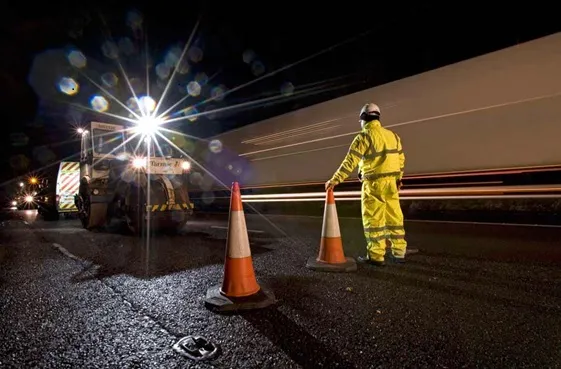
While repairing potholes on that scale is expensive, vastly more expensive for local authorities across the UK are the third-party claims by pedestrians, cyclists and motorists for injuries and damage caused by potholes, which can cost upwards of US$25,000 to settle.
Indeed, the number of claims being made against local authorities across the UK has risen by 40 per cent over the past 10 years, fuelled by intensive advertising of 'no win, no fee' compensation claim services by the legal profession. This increasing compensation culture has also spawned a significant number of fraudulent claims.
Against this background, the legal situation for local authorities is difficult. The 1980 Highways Act places a legal duty on them to inspect and maintain the roads within their jurisdiction (except for motorways which are the responsibility of the national
With the number of potholes increasing, and the timeframe (lest a compensation claim be lodged) in which they must be filled in decreasing, it is vital that local authorities have a thorough system of inspection in place.
A case in point is Lancashire County Council (LCC) which, seven years ago, implemented such an inspection system by appointing
Cost benefit
In purely financial terms, LCC has demonstrated how an ongoing programme of safety inspections plays a crucial part, not just in the management and maintenance of its roads, but also in substantially reducing compensation payouts. When the programme began in 2003, LCC was paying out nearly US$11.2 million a year in claims. Last year, that was reduced to just over $4 million.According to Nick Pocock, Project and Technical Manager at Capita Symonds, the financial savings come primarily from the sophistication of the system: "Our safety inspection system enables fraudulent claims to be repudiated more easily because the data collected is so accurate and contains an enormous amount of information."
The system
Capita Symonds uses a team of 10 dedicated highway safety inspectors to cover the whole of the LCC highway network looking for all hazardous defects that may cause damage or injury to the general public and vehicles. The team then measures, records and transmits the information to LCC which then arranges for the relevant repairs to be carried out.Project:
• Highway Safety Inspection programme, Lancashire, UK
Costs:
• US$638,000 per annum
• RoI: 43 per cent ($908,000 saved)
Benefits:
• Annual savings of approximately 60 per cent on third party claim payouts;
• A safer road network;
• Reduction in manpowerState-of-the-art data capture devices are used to carry out inspections, utilising GPS and 3G technology to locate and transmit data from the roadway to a central office. Software enables 'real world co-ordinates' to provide a simple reference for locating repair sites while collection methods allow direct transfer of data to GIS and other current mapping systems (safety inspectors can locate and describe defects before exporting information direct from site to the appropriate system).
Nevertheless, evolution is key, says Pocock: "We are currently investigating methods of including systems to allow GPS tracking of inspections which would allow a definitive and legally accepted means of tracing all walked and driven inspections. We are even developing methods to transmit live data from site to office, thus speeding an already efficient system, as well as including the facility to carry out highway condition surveys at the same time as safety inspections, making full use of the inspector's time on site and providing an even more cost-effective system."









